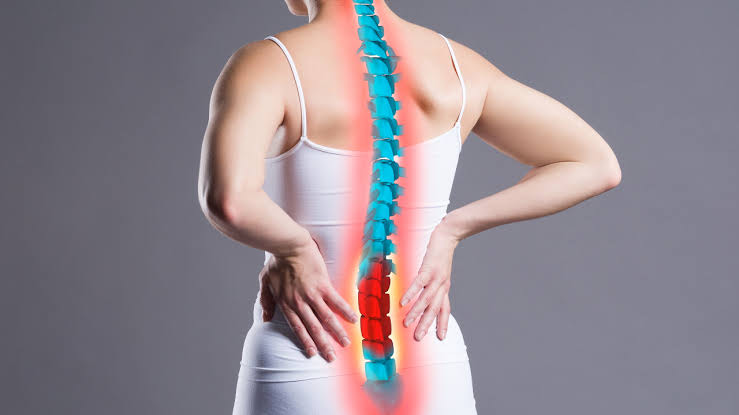As back pain becomes a near-universal complaint in today’s deskbound world, experts warn that the spine is quietly bearing the brunt of our sedentary lifestyles. From stress-induced stiffness to early disc degeneration among young professionals, spine health is no longer just a concern for the elderly
Highlighted Quote: Sitting for long hours slows down metabolism, affects blood circulation, and contributes to a whole host of problems—from weight gain and diabetes to musculoskeletal degeneration

PNS| HYDERABAD
We live in an age where productivity is measured by hours spent in front of screens. From morning Zoom calls to late-night Netflix binges, the average adult today spends over 9 hours a day sitting—and the effects are showing. Back pain, once considered a problem of aging, is now becoming a daily complaint even among 20- and 30-year-olds.
It’s no wonder then that experts have begun comparing the health impact of prolonged sitting to that of smoking. And while it may sound exaggerated, there’s growing evidence that this modern-day lifestyle habit is slowly wreaking havoc on our bodies—particularly the spine.
In a detailed conversation with The Pioneer, Dr. Chandra Sekhar Dannana, Senior Consultant – Orthopaedics at CARE Hospitals, Banjara Hills, breaks down why our sedentary routines are leading to serious spine issues, how stress silently amplifies physical pain, and why ignoring that minor stiffness might cost you more than you realise.
“Sitting for long hours slows down metabolism, affects blood circulation, and contributes to a whole host of problems—from weight gain and diabetes to musculoskeletal degeneration,” explains Dr. Dannana. While the analogy to smoking may not be medically equivalent in terms of toxins, it effectively draws attention to a silent epidemic: the structural harm caused by immobility.

He notes that back problems, particularly from poor posture, are on the rise. “Sitting compresses the lower spinal discs and weakens support muscles, especially when done without proper back support. It’s not about one day of slouching—it’s the daily accumulation that leads to long-term damage.”
According to Dr. Dannana, most back issues among younger adults stem not from structural deformities but lifestyle choices. “Hours of poor posture, physical inactivity, and prolonged sitting quietly take a toll. People usually notice it when the stiffness becomes persistent or pain starts interfering with daily tasks.”
The good news? Many of these issues are reversible—if caught early. “Small changes like correcting posture, building core strength, and moving every 30–45 minutes during work can delay or completely prevent further degeneration,” he says.
Beyond physical habits, Dr. Dannana highlights a powerful but often overlooked trigger—mental stress. “Stress manifests in the body, especially around the shoulders and neck. It causes muscles to tighten unconsciously and worsens with poor sleep or anxiety. Patients often come in with no structural issues, but their pain is very real. In such cases, spine care must be paired with mental health care—relaxation, therapy, and work-life balance are all essential.”
With remote work becoming the norm, Dr. Dannana says his clinic has seen a sharp increase in patients—particularly tech professionals and students—complaining of back and neck stiffness.
“At home, people often work from beds or dining chairs. Unlike office setups with ergonomic furniture, home environments lack proper lumbar support or screen alignment. The result? Early disc bulges and chronic stiffness, even in people in their 20s and 30s.”
The spine isn’t built for static positions. “When you sit for hours, the natural lumbar curve flattens. This puts added stress on discs and joints. Over time, discs begin to dry or bulge. Hip flexors tighten, glutes weaken, and posture-supporting muscles waste away,” Dr. Dannana explains.
People usually mistake this for regular stiffness. “But chronic sitting can actually restructure your spine in unhealthy ways.”
How often should you move? “Ideally, every 30 to 45 minutes,” says Dr. Dannana. “Even just standing up, stretching, or walking around for a minute or two helps reset alignment and improve circulation.”
He recommends quick stretches like shoulder rolls, back arches, and hamstring stretches during work breaks to maintain mobility and prevent damage.
People often downplay mild stiffness or soreness, but Dr. Dannana urges awareness. “Pain lasting more than two to three weeks, especially if it’s spreading down the arms or legs, should not be ignored. Tingling, numbness, or weakness can indicate nerve compression.”
“Don’t wait until the pain becomes disabling. Early diagnosis can mean faster recovery and fewer complications.”
One common misconception is that back pain is a part of aging. “That’s just not true. With proper care and attention, most spine issues are preventable,” says Dr. Dannana. Another myth is that rest is the best remedy. “Too much rest actually weakens muscles further and delays healing.”
He also cautions against relying solely on painkillers. “They mask the symptoms but don’t treat the root cause—posture, weak muscles, or improper biomechanics.”
Can back pain in your 30s or 40s indicate serious spinal damage? “Sometimes, yes,” he says. “Many cases are posture-related, but degeneration is showing up earlier now—especially with sedentary lifestyles and high stress levels. If you notice symptoms like numbness, weakness, or radiating pain, it’s important to investigate.”
If your back pain recurs frequently or interferes with daily life, Dr. Dannana recommends skipping general pain meds and visiting a spine specialist. “Especially if the pain shoots down the limbs or worsens with movement, a specialist can provide the right imaging, diagnosis, and long-term plan.”
“Surgery is rarely the first line of treatment,” he affirms. “Physiotherapy, posture correction, anti-inflammatory medications, and lifestyle adjustments work well in most cases. Steroid injections are sometimes used for temporary pain relief.”
He emphasizes that consistent rehab and minor lifestyle changes—like better seating and weight management—can prevent recurrence and long-term damage.
“Exercise is crucial for spinal health,” says Dr. Dannana. “Swimming, yoga, and pilates are excellent low-impact options. They strengthen the muscles that support the back without overloading it.”
He adds, “Even a daily walk helps. The key is regular, guided movement. Jumping into intense workouts without understanding your body can worsen existing issues.”
Early-stage disc degeneration can be managed—but if ignored, it can lead to chronic pain, nerve involvement, and limited mobility. “It can affect not just physical health, but mental well-being, work performance, and relationships. That’s why it’s critical to address even minor discomforts before they escalate,” says Dr. Dannana.
In today’s sedentary world, spinal health is no longer a luxury—it’s a necessity. Whether it’s your seating posture, stress level, or movement routine, your back reflects your lifestyle choices.



